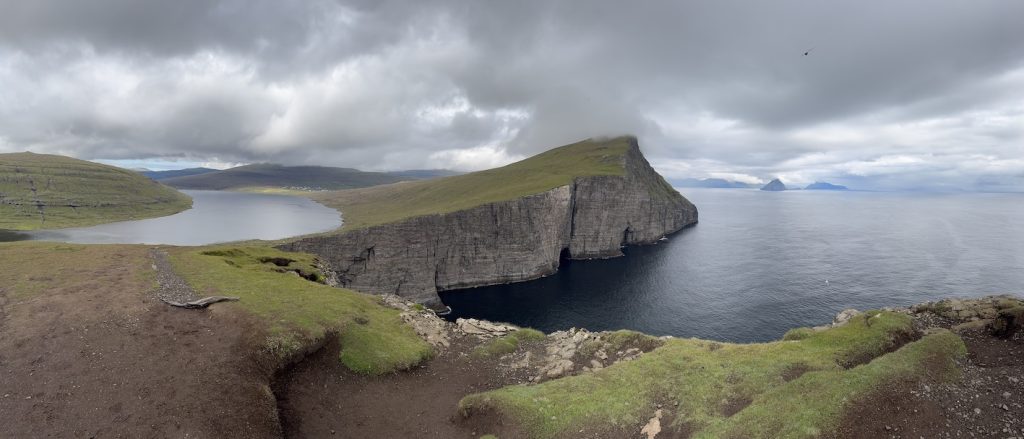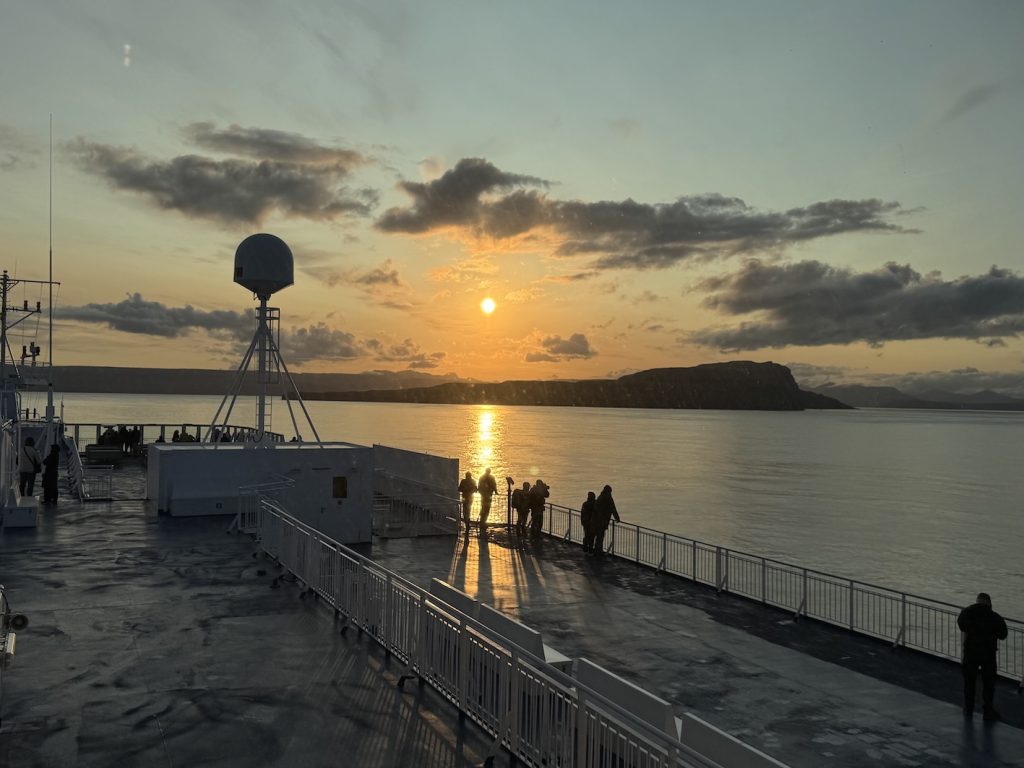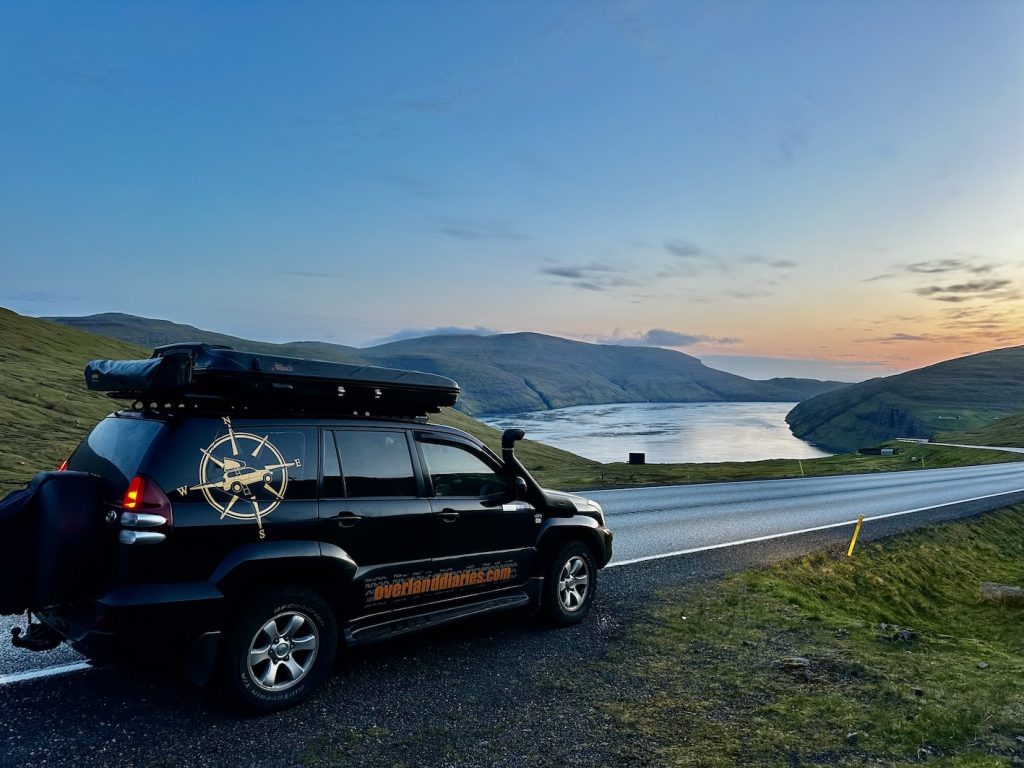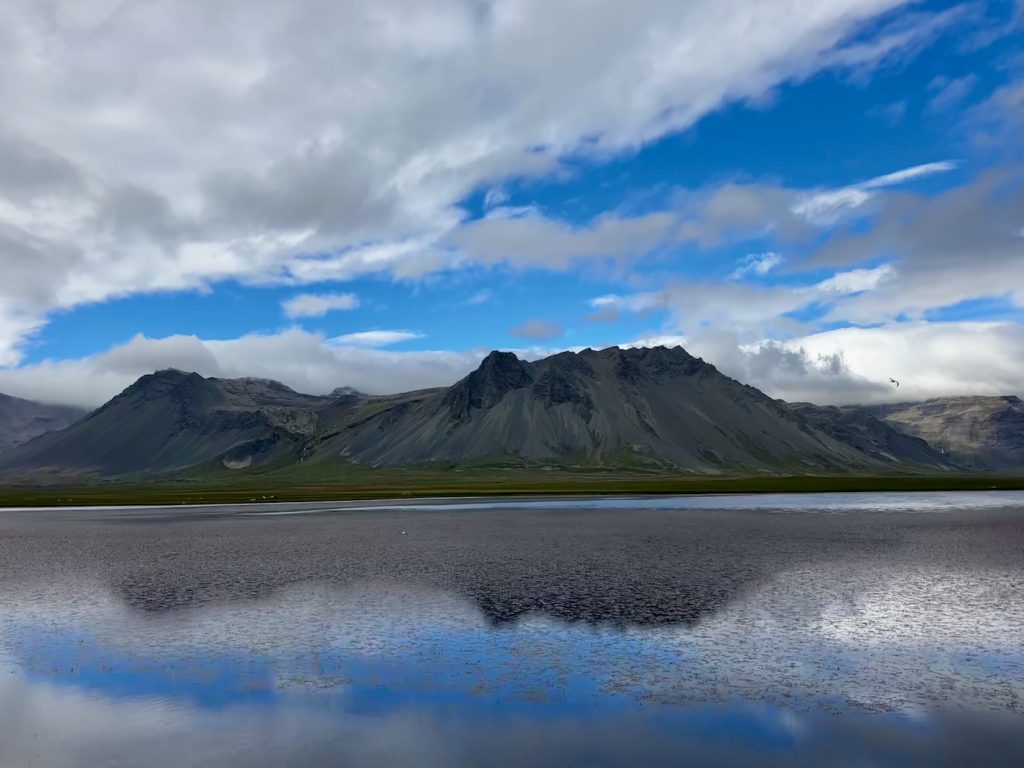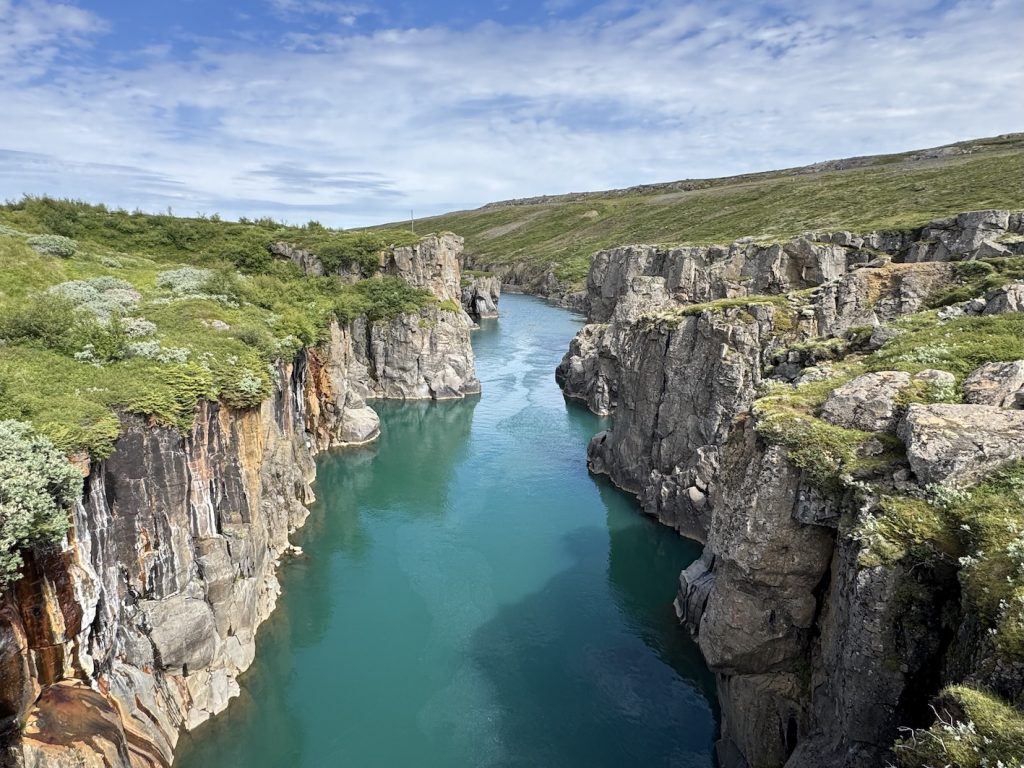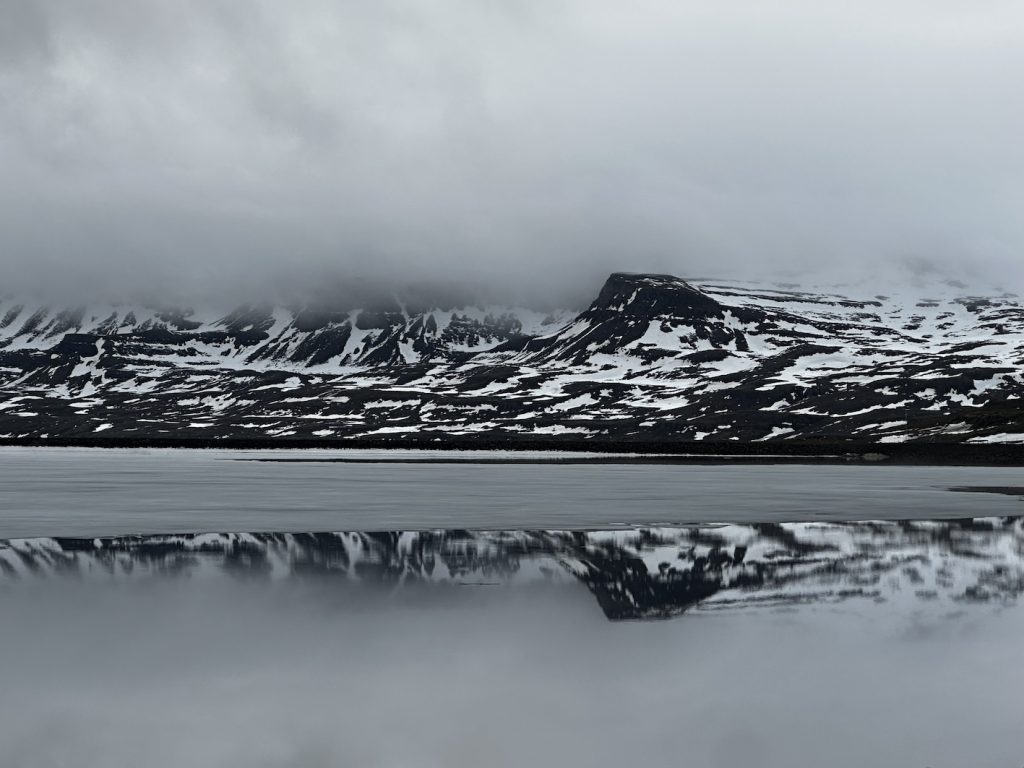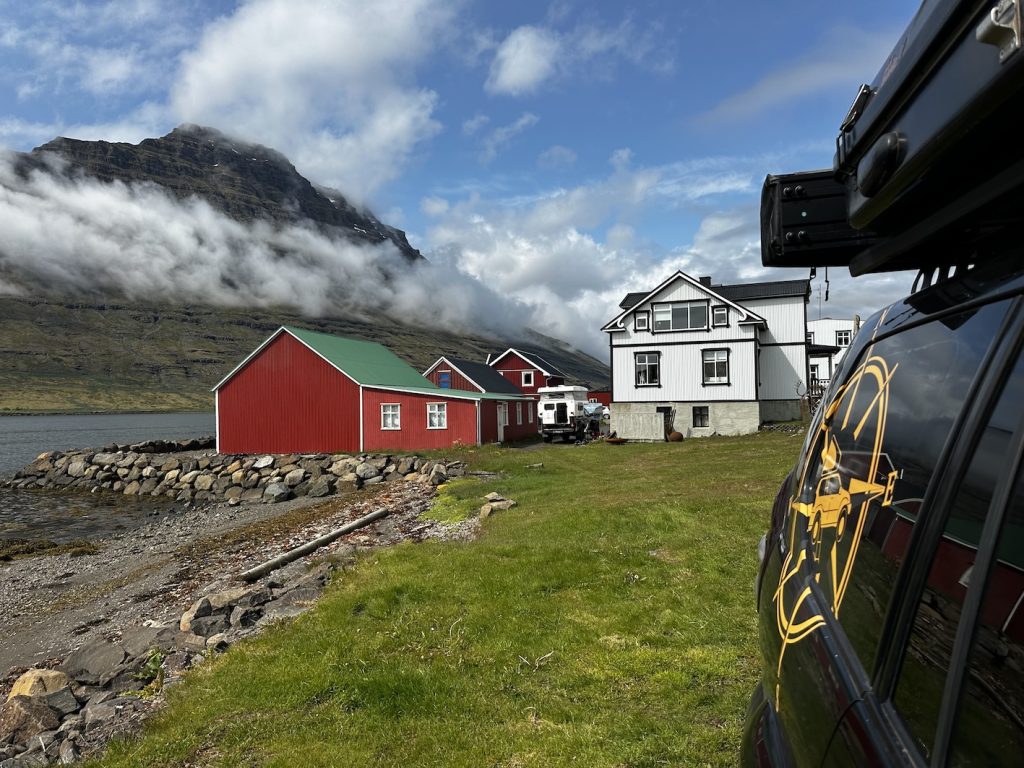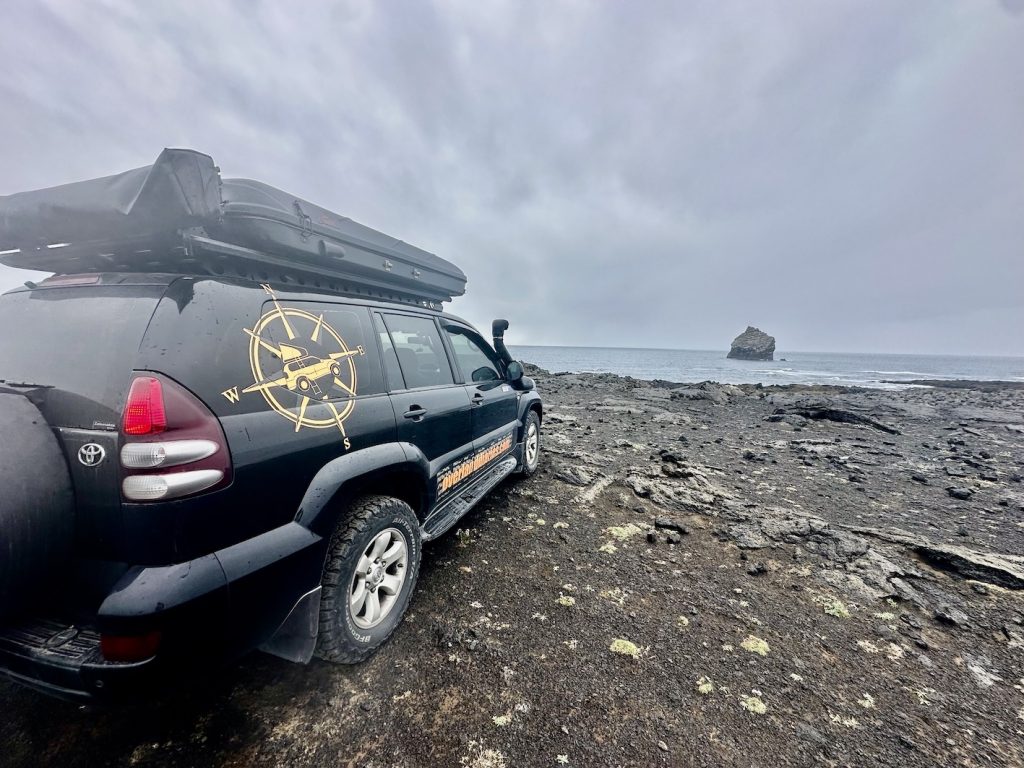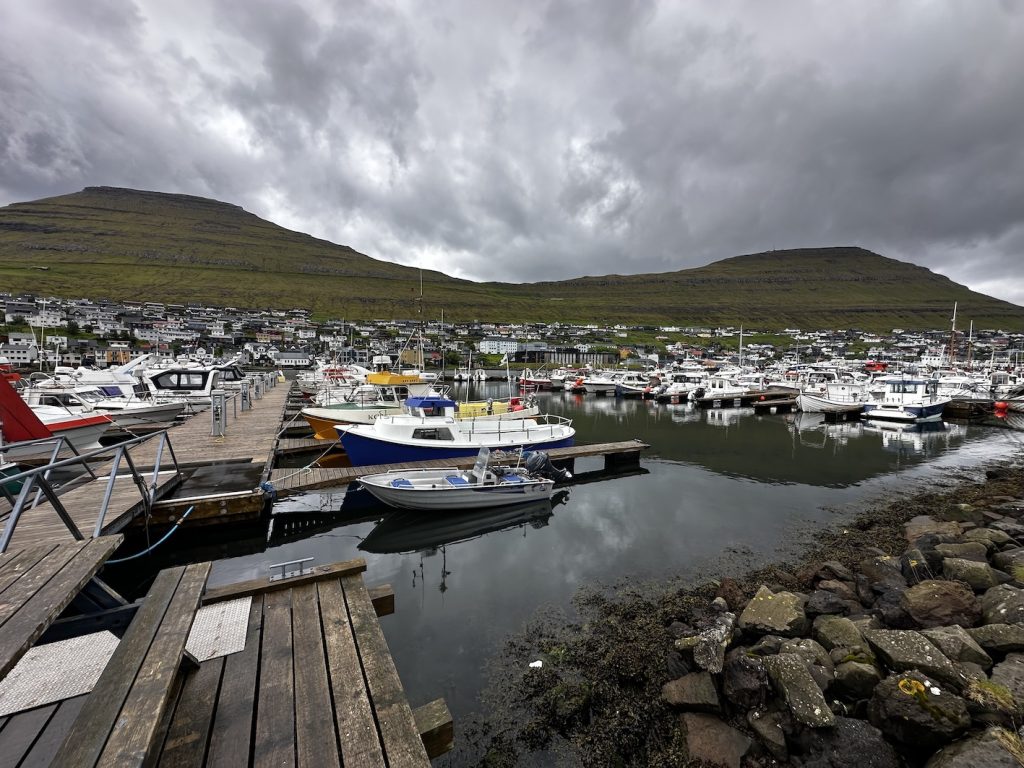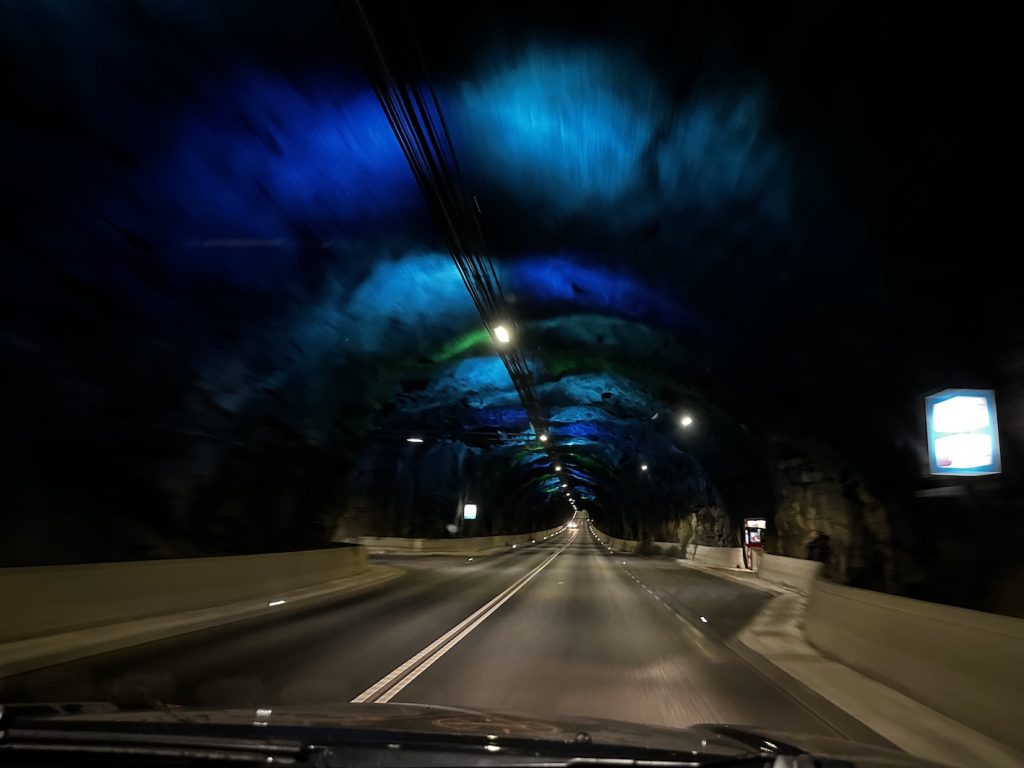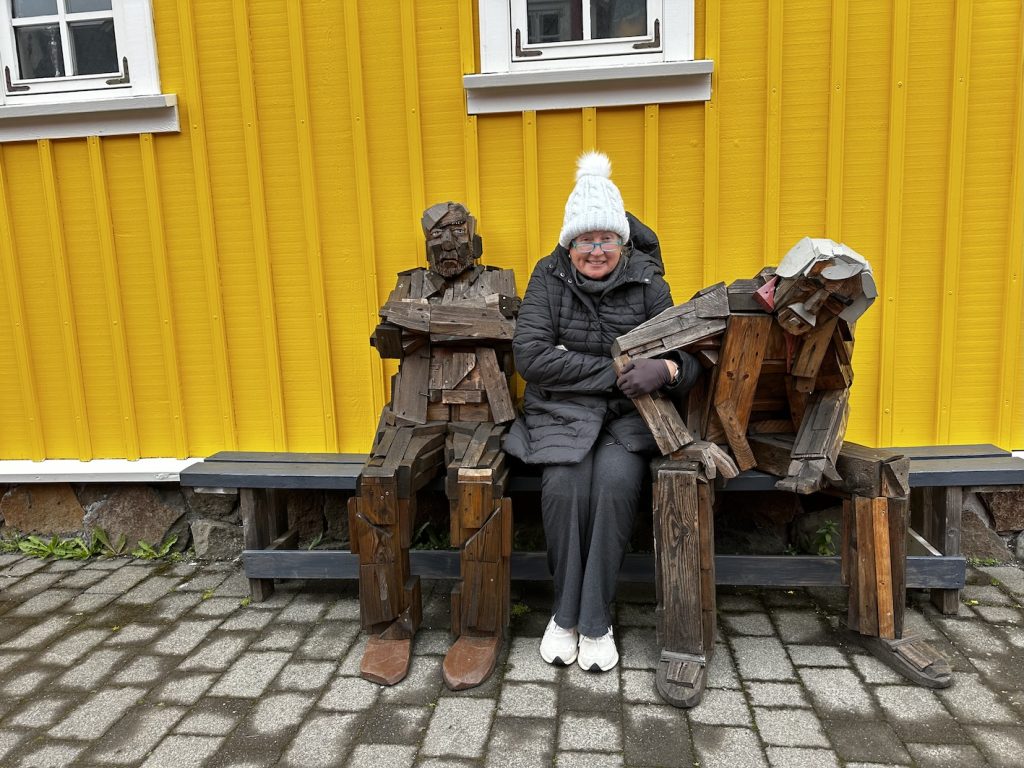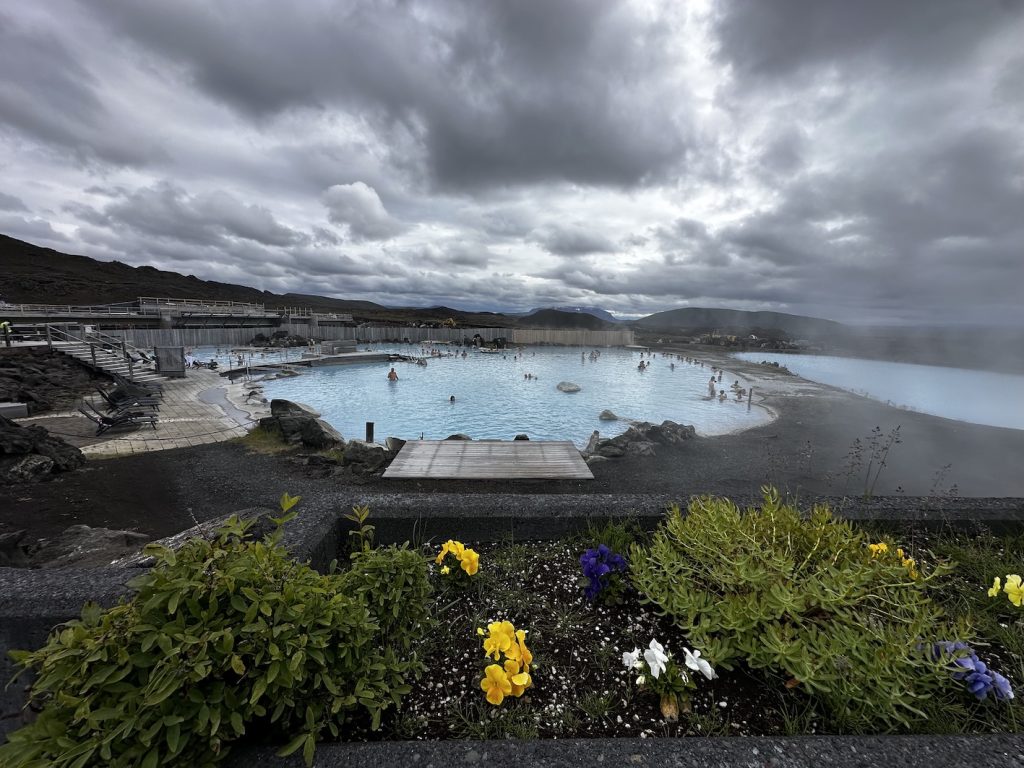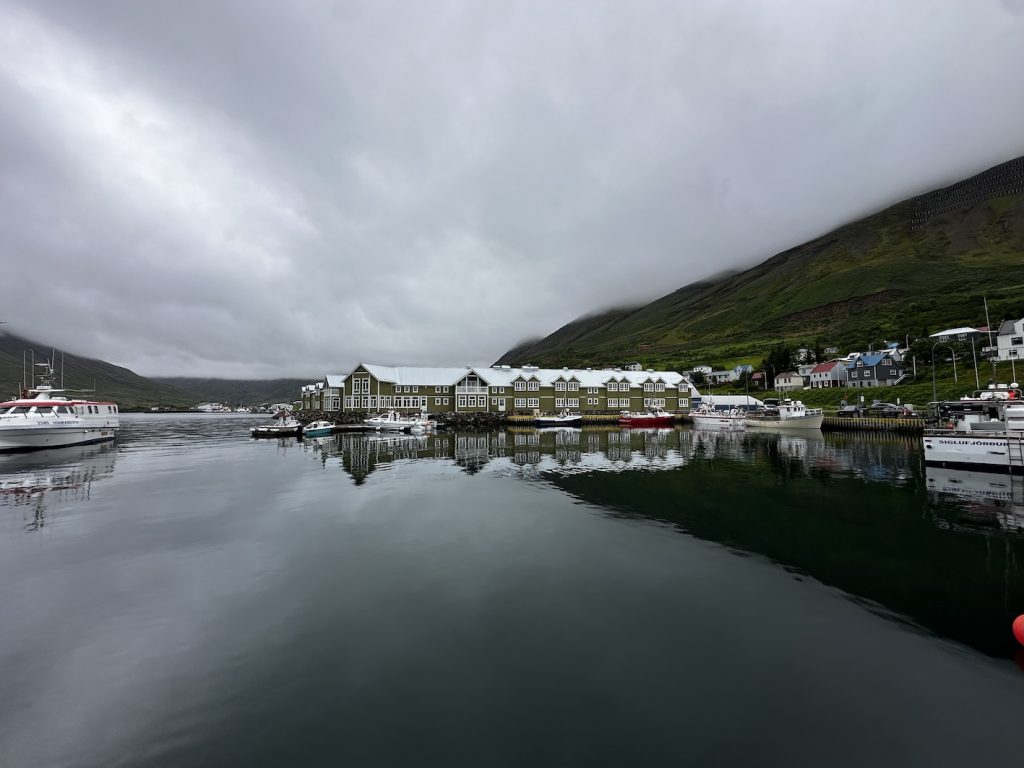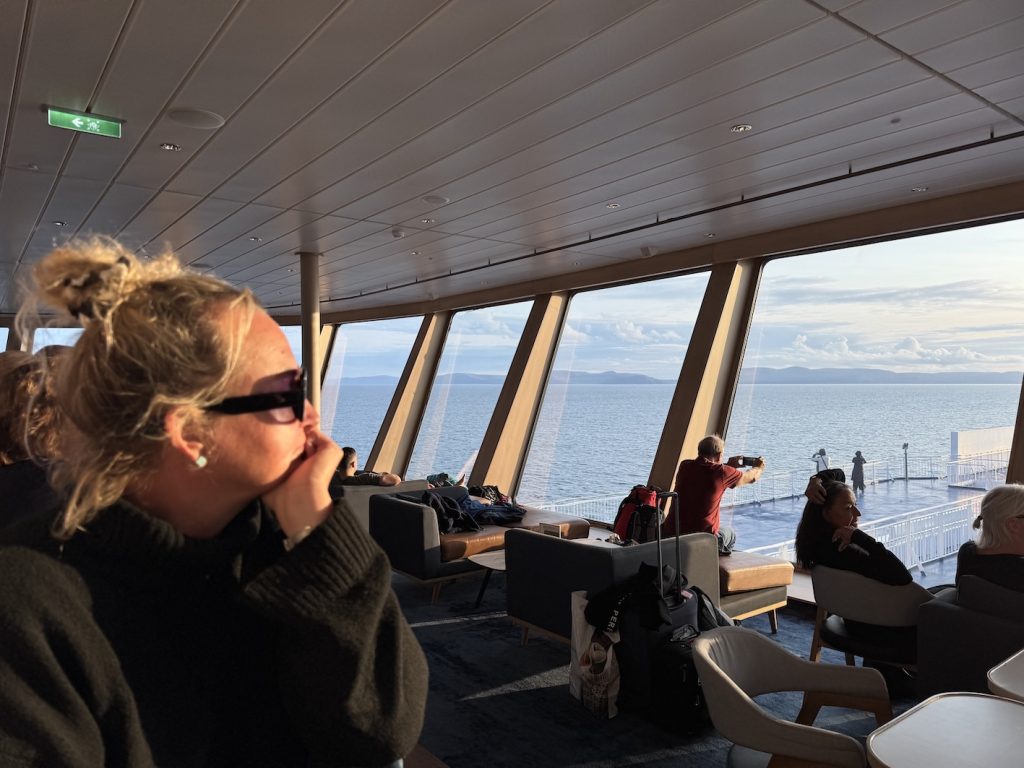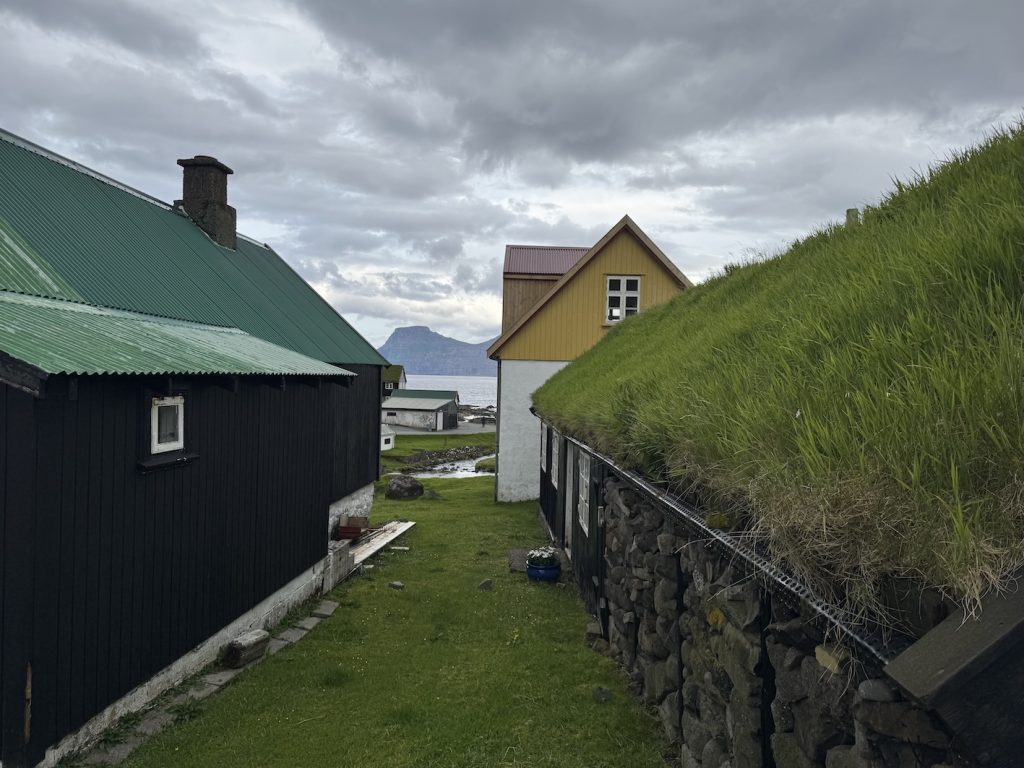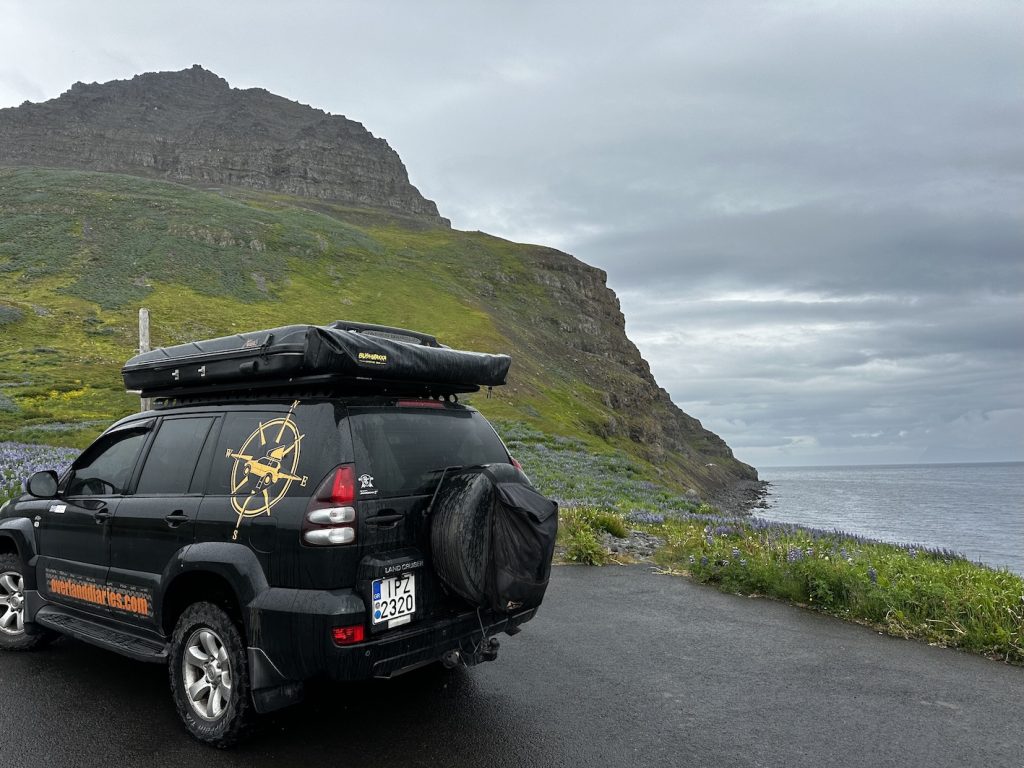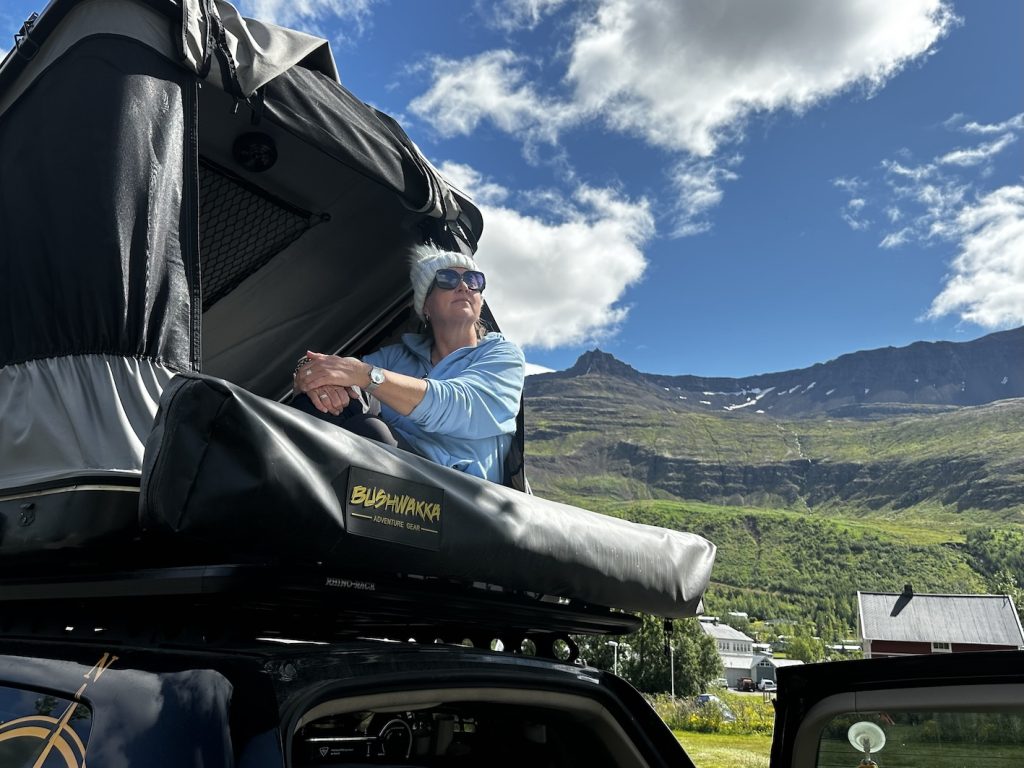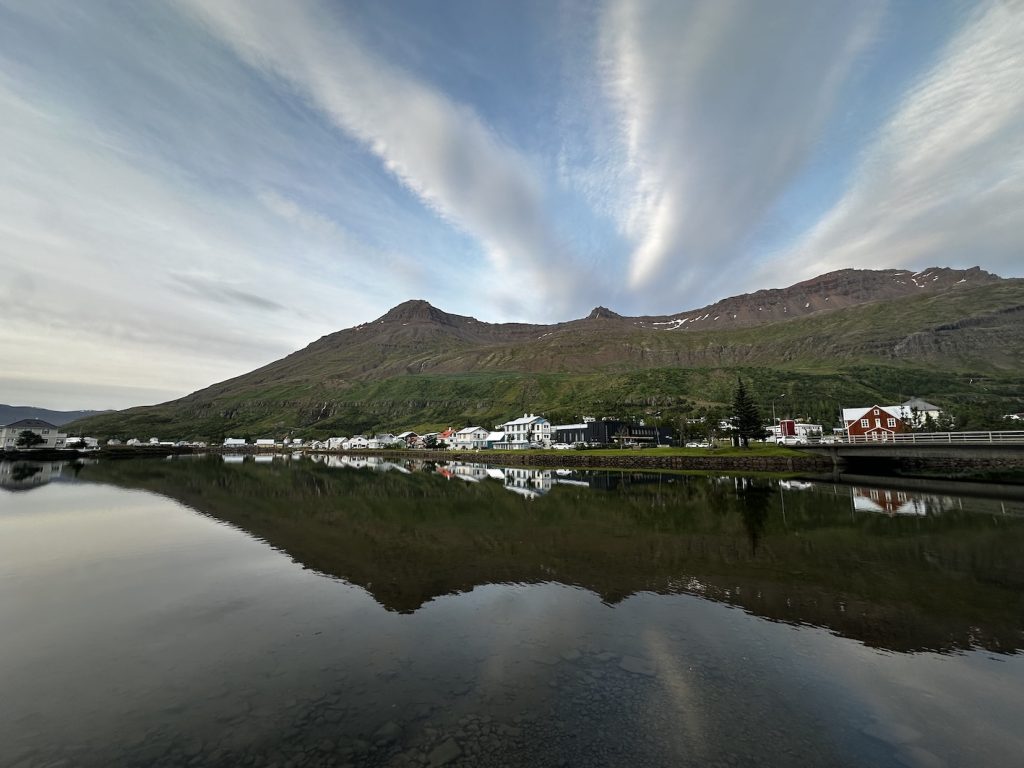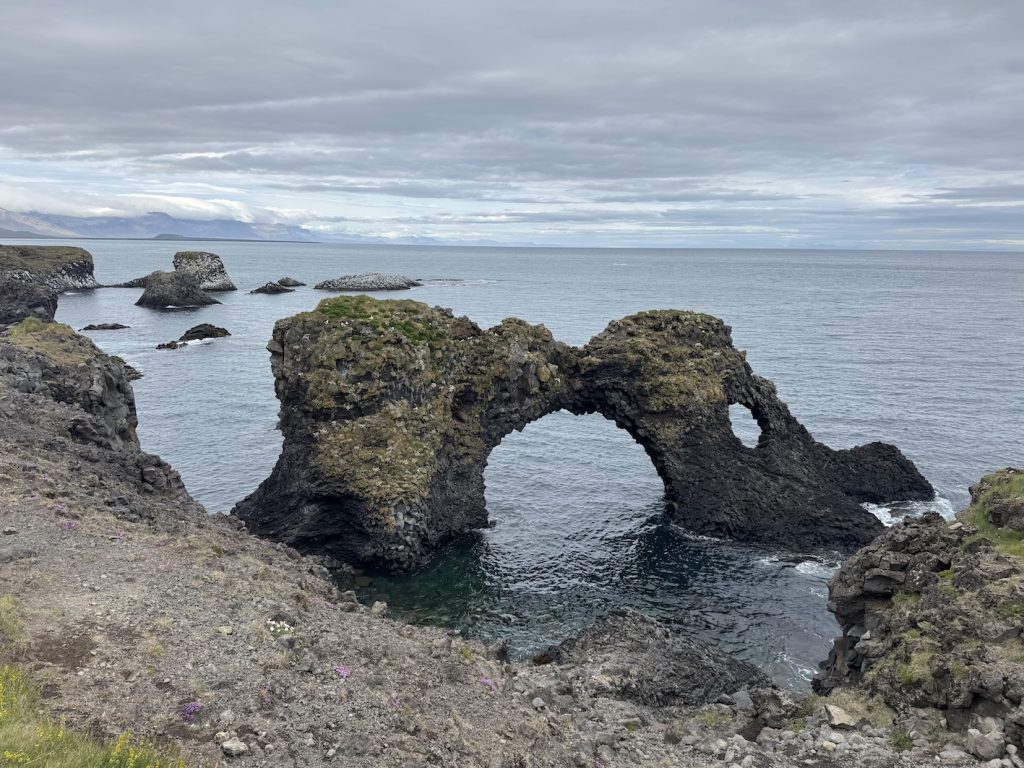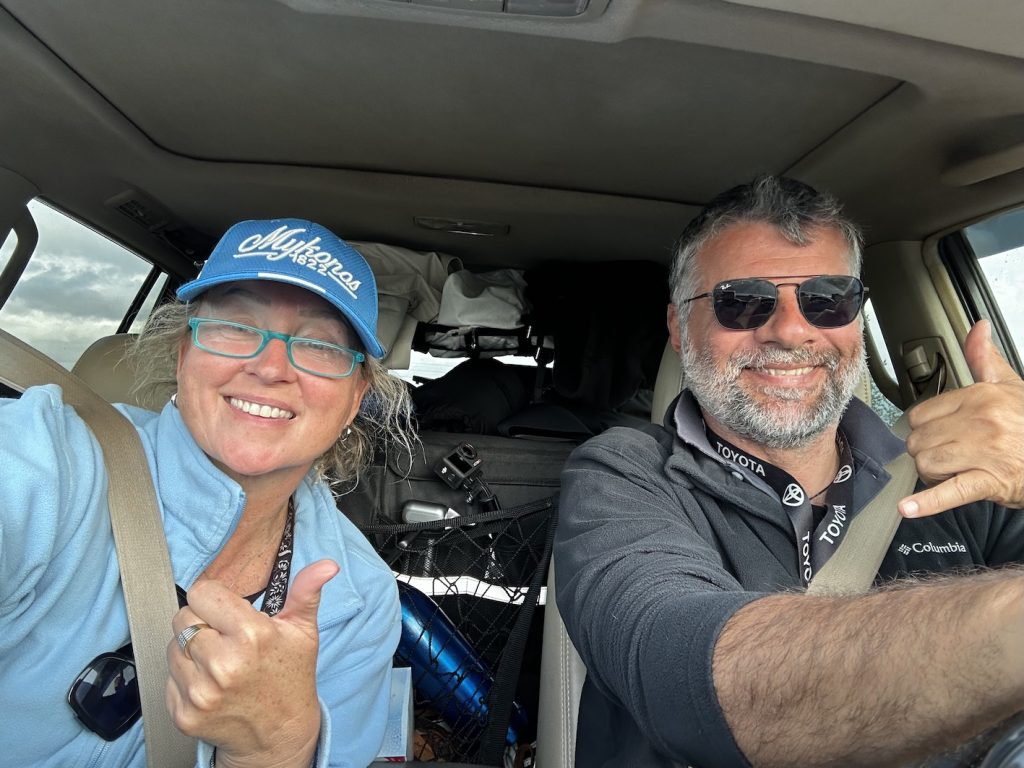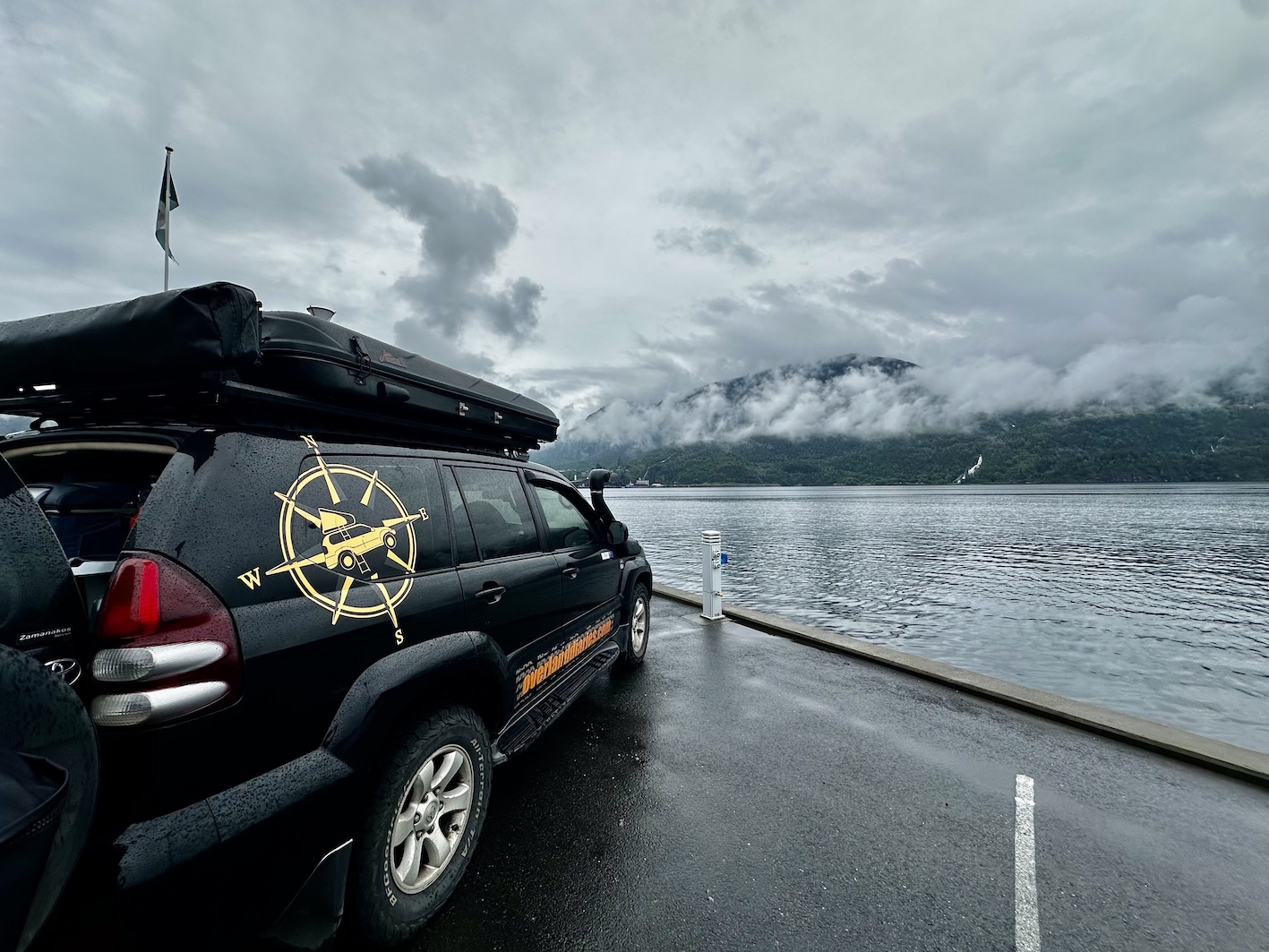No matter how much research you think you’ve done—how many blogs you’ve read, how many YouTube videos you’ve watched, or guidebooks you’ve studied—nothing truly prepares you for the Faroe Islands and Iceland.
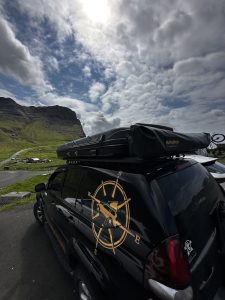
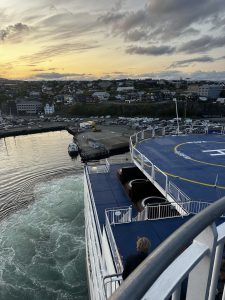 These are destinations that defy expectations, places where nature keeps its most dramatic secrets tucked away in fjords, behind waterfalls, and high on misty cliffs. Almost everyone who ventures here, ends up completely caught off guard in the best way possible. From fog-wrapped peaks to scorched volcanic highlands, both Iceland and the Faroe Islands offer landscapes so wild and untouched they feel like another planet. There’s an almost unknown rawness to them that’s hard to put into words. It’s a wild, almost mythic beauty that speaks straight to your soul. Believe us, there is no match for it anywhere else on Earth.
These are destinations that defy expectations, places where nature keeps its most dramatic secrets tucked away in fjords, behind waterfalls, and high on misty cliffs. Almost everyone who ventures here, ends up completely caught off guard in the best way possible. From fog-wrapped peaks to scorched volcanic highlands, both Iceland and the Faroe Islands offer landscapes so wild and untouched they feel like another planet. There’s an almost unknown rawness to them that’s hard to put into words. It’s a wild, almost mythic beauty that speaks straight to your soul. Believe us, there is no match for it anywhere else on Earth.
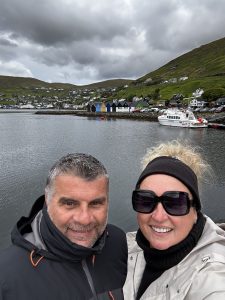
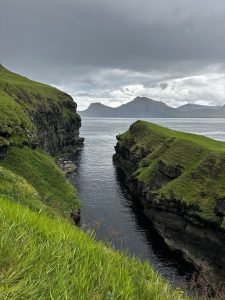 Our journey began with the Faroe Islands. Most people only hear of these rugged, isolated isles when controversy surrounding the old whale-hunting traditions surfaces in global media. But those headlines do little justice to the spirit of this archipelago. The Faroe’s are so much more than that. These 18 rocky islands tossed in the North Atlantic are home to warm people, ancient traditions, and an overwhelming natural majesty.
Our journey began with the Faroe Islands. Most people only hear of these rugged, isolated isles when controversy surrounding the old whale-hunting traditions surfaces in global media. But those headlines do little justice to the spirit of this archipelago. The Faroe’s are so much more than that. These 18 rocky islands tossed in the North Atlantic are home to warm people, ancient traditions, and an overwhelming natural majesty.
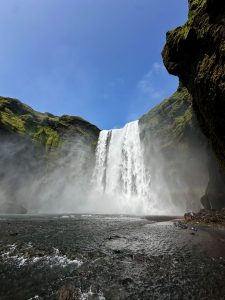
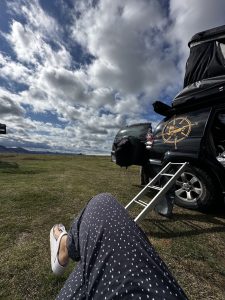 We arrived in Tórshavn close to midnight—11:30 PM to be exact—and yet the sun still hung low in the sky. Landing here with our trusty overland vehicle, Voukefalas, our Land Cruiser, felt less like entering a country and more like stepping directly into a postcard. The air was crisp, the landscape dramatic and strange, and even the sky seemed to hang heavier. Our first challenge? After disembarking, we drove straight to Tórshavn’s campsite, only to be greeted with, “Hello Reservation? No! Sorry, fully booked.” With no backup plan, we turned north. We drove through tunnels carved into mountains, twisting along narrow roads that pass through cliff-hugging villages. Passing houses with grassy turf roofs, looked more like sets from Viking movies than modern dwellings.
We arrived in Tórshavn close to midnight—11:30 PM to be exact—and yet the sun still hung low in the sky. Landing here with our trusty overland vehicle, Voukefalas, our Land Cruiser, felt less like entering a country and more like stepping directly into a postcard. The air was crisp, the landscape dramatic and strange, and even the sky seemed to hang heavier. Our first challenge? After disembarking, we drove straight to Tórshavn’s campsite, only to be greeted with, “Hello Reservation? No! Sorry, fully booked.” With no backup plan, we turned north. We drove through tunnels carved into mountains, twisting along narrow roads that pass through cliff-hugging villages. Passing houses with grassy turf roofs, looked more like sets from Viking movies than modern dwellings.
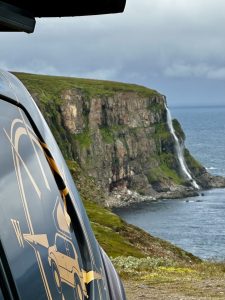
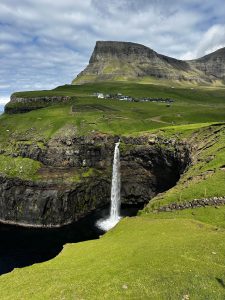 Eventually, we pulled over by the still waters of Sørvágsfjørður. The sea was so calm it looked like polished glass, broken only by the soft flutter of seabirds. The silence was deep, almost sacred. It felt like the islands were breathing around us.
Eventually, we pulled over by the still waters of Sørvágsfjørður. The sea was so calm it looked like polished glass, broken only by the soft flutter of seabirds. The silence was deep, almost sacred. It felt like the islands were breathing around us.
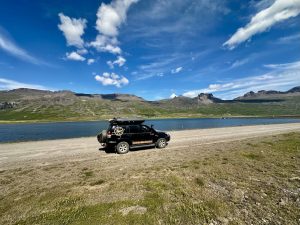
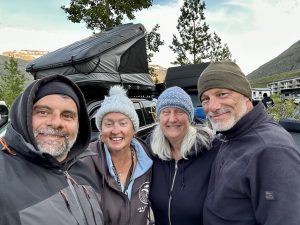 As we pushed north, our cruiser manoeuvred through steep switchbacks. Sheep were lounged lazily on the road’s edge, totally unbothered by our approach. We were fully loaded, drawers packed, fridge humming, fuel tanks full, and the roof tent strapped down so we pressed forward through the ever-drizzling rain.
As we pushed north, our cruiser manoeuvred through steep switchbacks. Sheep were lounged lazily on the road’s edge, totally unbothered by our approach. We were fully loaded, drawers packed, fridge humming, fuel tanks full, and the roof tent strapped down so we pressed forward through the ever-drizzling rain.
The roads were paved, but slick. Rochelle, half in a panic but fully enchanted, kept snapping photos between gasps. In just a few hours, we were soaked, amazed, and completely in love. And that first surreal night? It stayed with us as the highlight of our time in the Faroes.
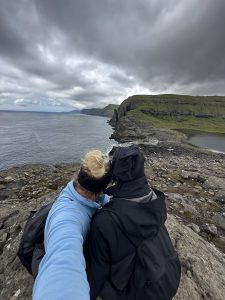
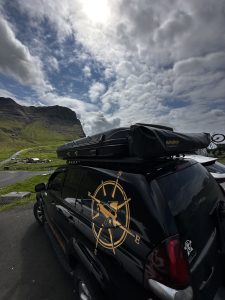 Our racing with time in a Timeless Place had started. With only 72 hours in the islands, we packed our days to the brim. From the village of Viðareiði, with its jaw-dropping setting between ocean and mountain, to a quick lunch of traditional fish and chips in Klaksvík, every stop felt like a stolen moment. We wandered through Gjógv, a tiny hamlet nestled between cliffs, and stood before the tumbling waters of Fossa, the highest waterfall in the Faroes.
Our racing with time in a Timeless Place had started. With only 72 hours in the islands, we packed our days to the brim. From the village of Viðareiði, with its jaw-dropping setting between ocean and mountain, to a quick lunch of traditional fish and chips in Klaksvík, every stop felt like a stolen moment. We wandered through Gjógv, a tiny hamlet nestled between cliffs, and stood before the tumbling waters of Fossa, the highest waterfall in the Faroes.
Later, we hiked above the cloud-wrapped village of Gásadalur, teetering on the cliffs’ edge, where it felt like the world just… stopped. Moments like this, when you realise you’re suspended between sea and sky, are why we overland.
The next day, we visited the show-stopping Múlafossur waterfall where we had our first close encounter with puffins—those clumsy, adorable little birds that live only in these parts of the world. Under an uncharacteristically clear blue sky, it was pure magic. And in the Faroes, magic doesn’t last. That day’s sunshine was rare and fleeting, and we soaked in every second. Our final hike was to Trælanípa, a lake that appears to float impossibly above the ocean. After an easy two-hour trek, we stood breathless at the edge of the cliff, watching the water defy gravity. It was the perfect send-off from a place that constantly challenged what we thought was real.
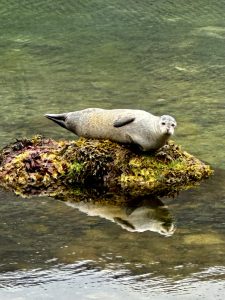
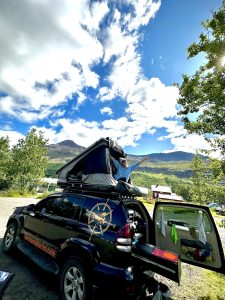 Next Stop: Iceland. After a calm ferry ride across the North Atlantic, we rolled ashore in Seyðisfjörður, 24 hours later but in a whole new world. Jagged fjords, steep valleys, and icy rivers welcomed us as our tires met Icelandic soil. Voukefalas ,The Cruiser? Felt right at home. In the first half an hour we had driven through fog, passed 3 impressive waterfalls and stoped in a frozen lake. Rochelle even had time to make a mini snowman on the front of the car. As for the rest of the day it was eventful. We departed Seyðisfjörður, to hit a gas station in a town whose name we never quite learned, to pick up SIM cards, then ended up eating lunch in an abandoned fish station turned into a unique rustic restaurant. Yes, fermented shark (Iceland’s delicacy) was accidentally ordered. No, it did not become a favourite.
Next Stop: Iceland. After a calm ferry ride across the North Atlantic, we rolled ashore in Seyðisfjörður, 24 hours later but in a whole new world. Jagged fjords, steep valleys, and icy rivers welcomed us as our tires met Icelandic soil. Voukefalas ,The Cruiser? Felt right at home. In the first half an hour we had driven through fog, passed 3 impressive waterfalls and stoped in a frozen lake. Rochelle even had time to make a mini snowman on the front of the car. As for the rest of the day it was eventful. We departed Seyðisfjörður, to hit a gas station in a town whose name we never quite learned, to pick up SIM cards, then ended up eating lunch in an abandoned fish station turned into a unique rustic restaurant. Yes, fermented shark (Iceland’s delicacy) was accidentally ordered. No, it did not become a favourite.
As for the next upcoming days, waterfalls began appearing like clockwork. Iceland has over 10,000 of them, and we swore we saw at least a few hundred. Rochelle’s famous saying was “Hey there is another waterfall over there”. Then came the F-road, legendary Icelandic tracks that are raw, often unpaved routes leading deep into the highlands. Here was where the real adventure began.
For the next four weeks, we lived on the road. We did not manage to stay in one place a second night. Everyday was a new start to a beautiful destinations that most of the time was tripled up with other equals magical experiences that we did not have in our program. Our southern route took us from the steaming waters of the iceberg-strewn sands of Diamond Beach to the Instagram famous Blue Lagoon We traversed the hauntingly beautiful lava fields near Hvolsvöllur, wandered black sand beaches, and crawled through the surreal lava and angry steaming gassers around Raufarhólshellir.
Thanks to our last minute find of the trusty Camping Card, we found serene campsites marked only by wind-beaten driftwood. Nights were freezing, but inside our rooftop tent, bundled in thermals and wrapped in our electric blanket, we slept like babies. Well, except for the midnight sun and the 24/7 birdsong. (Do Icelandic birds actually ever sleep?)
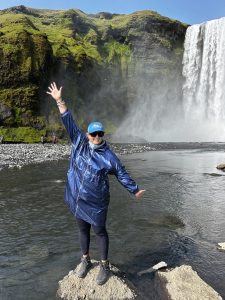
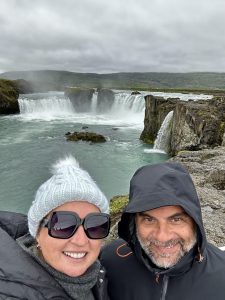 Each day held something new. Some places were crowded, but the real treasures were just a little further off the tourist map and in Iceland this places are not hard to find. . We visited geothermal pools, from rugged, free natural springs to luxurious spas, and fell completely in love with the F-roads. One highlight worth mentioning here, was the infamous F-210 detour to Landmannalaugar, a steaming wonderland of rainbow colored mountains and moss-covered hills. With that said, we did not made it all the way but up to a wide deep river crossing almost 2/3 of the way… and then we chickened out, we still consider it a highlight!! Although we both watched that river for a while, thinking we are here now lets do it, discretion won over craziness. “Next time,” we both said at the end and instead we set up a picnic and take in the unforgettable views before we drive the same way back.
Each day held something new. Some places were crowded, but the real treasures were just a little further off the tourist map and in Iceland this places are not hard to find. . We visited geothermal pools, from rugged, free natural springs to luxurious spas, and fell completely in love with the F-roads. One highlight worth mentioning here, was the infamous F-210 detour to Landmannalaugar, a steaming wonderland of rainbow colored mountains and moss-covered hills. With that said, we did not made it all the way but up to a wide deep river crossing almost 2/3 of the way… and then we chickened out, we still consider it a highlight!! Although we both watched that river for a while, thinking we are here now lets do it, discretion won over craziness. “Next time,” we both said at the end and instead we set up a picnic and take in the unforgettable views before we drive the same way back.
Next challenge was F-249 that led us across braided riverbeds to a glacier and an untouched by human hand national park. That bliss was short-lived, however, when one of our air suspension airbags failed. We slowly limped into the capital, Reykjavík for emergency repairs, spending a few rainy days exploring the city’s cozy cafes and quirky culture before hitting the road again.
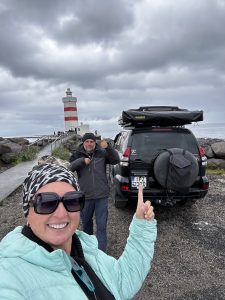
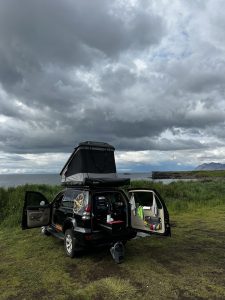 The Western Fjords left us speechless—literally, as words couldn’t capture the sheer scale of the beauty. We saw whales breach in silent bays, backtracked on F-35 to yet another isolated geothermal pools before reaching Askja, and camped beside thundering Dettifoss. Most nights, (although our camps were crowded) the landscape, the bright daylight and the peaceful surroundings made us feel that no one else was around. Just us, the wind, and the midnight sun. Our RTT held strong. The ladder made a fine towel rack . Our gas mileage was expensive. But our memories? Absolutely priceless.
The Western Fjords left us speechless—literally, as words couldn’t capture the sheer scale of the beauty. We saw whales breach in silent bays, backtracked on F-35 to yet another isolated geothermal pools before reaching Askja, and camped beside thundering Dettifoss. Most nights, (although our camps were crowded) the landscape, the bright daylight and the peaceful surroundings made us feel that no one else was around. Just us, the wind, and the midnight sun. Our RTT held strong. The ladder made a fine towel rack . Our gas mileage was expensive. But our memories? Absolutely priceless.
Iceland did not plan to give us a boring ending by no means. The exact opposite was ment to be epic till the end!!!Our final week took us through the north, where landscapes changed with each bend in the road. Towering cliffs, glacial lakes, and endless flocks of sheep made for a fitting finale. Even in our last day our rain dear close encounter and a catch up with our old friends the Puffins were all alined for the final goodbye.
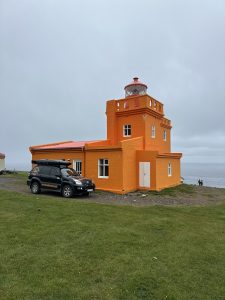
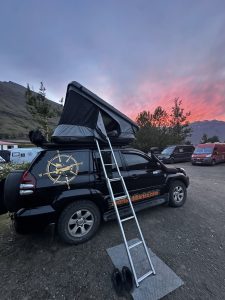 If you can handle hurricane-level winds, woolly traffic jams, and overpriced hot dogs, you’re in for the overlanding experience of a lifetime. This was not just a Road Trip! This was a transformation. From the tranquil, green-smooth cliffs of the Faroe’s to the black volcanic heart of Iceland, every moment felt intensely real. Nature here doesn’t perform for an audience, it simply is. And that authenticity changes you. So to all you overlanders chasing solitude, challenge, and soul , look no further. The Faroe Islands and Iceland don’t just offer you roads; they offer you revelations. Your vehicle will be tested. Your patience with rain fog and wind will wear thin. But your spirit? It will soar. Why??? Because this… this is overlanding at its most honest, most raw, and most unforgettable form. Happy Roads!!!
If you can handle hurricane-level winds, woolly traffic jams, and overpriced hot dogs, you’re in for the overlanding experience of a lifetime. This was not just a Road Trip! This was a transformation. From the tranquil, green-smooth cliffs of the Faroe’s to the black volcanic heart of Iceland, every moment felt intensely real. Nature here doesn’t perform for an audience, it simply is. And that authenticity changes you. So to all you overlanders chasing solitude, challenge, and soul , look no further. The Faroe Islands and Iceland don’t just offer you roads; they offer you revelations. Your vehicle will be tested. Your patience with rain fog and wind will wear thin. But your spirit? It will soar. Why??? Because this… this is overlanding at its most honest, most raw, and most unforgettable form. Happy Roads!!!

